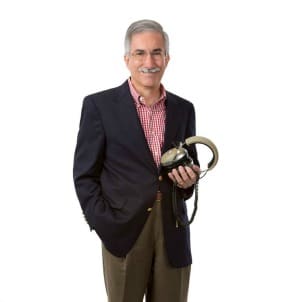
There are a number of reasons why automobile manufacturers may be considering dropping AM/FM radios from the car dashboard.
Some of the reasons are things our industry cannot do anything about. But some of the reasons are things we can do something about. AM and FM radio receivers are essential in times of emergencies and our industry needs to amp up everyone’s recognition of that.
Below are reasons I can think of why auto manufacturers may consider removing AM and FM radios. I believe that our industry should confront these reasons and determine how to counteract this disturbing prospect:
• AM/FM radio antennas that work well are expensive (for instance, diversity antennas for FM). Conversely, inexpensive car radio antennas do not work well and lead to car owner complaints.
• AM/FM radio antennas are larger, more ugly and more difficult to design into a car than satellite radio and 4G antennas.
• Automobiles are now producing vastly greater electrical noise from a variety of computers and electronics within the vehicle. Filtering, choking, or shielding all of the noise sources is complicated and expensive. Noise from car electronics results in poor AM and FM reception.
• Cars are being made of composite materials that make poor ground planes for AM reception.
• HD radio reception for both AM and FM in many markets has time-alignment and audio level alignment issues leading to new-car-buyer customer complaints.
• The implementation of the HD radio interface in many car receivers is abysmal from a driver ease-of-use perspective.
• AM and FM may take away a potential income stream for car manufacturers from either Sirius/XM or from cooperative agreements with cell phone companies for 4G chips in car receivers.
• Car buyers are telling dealers that they do not listen to radio.
Our industry can do nothing about cars being made of composite material. We can, however, do something about the sometimes abysmal state of HD radio transmission implementation so that frequent HD listening transitions between digital to analog are not annoying and irritating to radio listeners.
Above all, as much as we all loathe government, we ideally look to our national government to recognize that AM and FM radio is the essential link between information and ignorance, and potentially life and death, in times of emergencies. The one-to-thousands or -millions nature of radio broadcasting, the immediacy, and the redundancy of dozens of stations reaching every citizen, cannot be replicated or equaled by any other media, particularly after a disaster hits and the population is without power and in need of emergency information.
Taking care of citizens in times of disaster is an essential governmental function. Our government will be less able to fulfill this function of aiding and protecting us in emergencies if we do not have AM and FM radios readily available in cars, homes, and businesses.
I would love to go so far as to posit that it should be government’s role to mandate that every consumer communications device such as cell phones, car radios, and MP3 players have integrated into it the ability to solidly receive AM and FM broadcasts. Such a mandate would mean that car manufacturers would be required to continue to equip cars with AM and FM radios that achieve certain reception standards (a radio that is so cheap and functioning so poorly that it only receives stations within five miles does no good in times of emergencies).
Toward the goal of solid AM and FM reception, car manufacturers should be mandated to filter, choke, and shield noise sources in cars so that cars are not a rolling noise source, and to install AM and FM antennas that perform to a certain standard. After all, car manufacturers are now federally required for many cars to meet certain crash standards, have tire pressure monitors, have anti-lock brakes, and have stability controls, all for emergencies. Car manufacturers should also be required to have good, solidly-performing car radios.
Our broadcasting industry comes late to this challenge. We should have embarked on this quest in the early 1990s. There were broadcasters who tried to do so two decades ago but got no traction from the broadcast industry for reasons such as, “If we ask for receiver standards, that might make AM sound better and that would hurt my FM,” and so on. We radio broadcasters are often our own worst enemy.
Simply put, AM and FM radios are essential in times of emergency. It is too late when disaster hits to ponder, “If only I had a radio in this car, I would know where the shelter is … if only I had a radio in this car, I would know where there is food and water … if only I had a radio in this car, I would know that flash floods are coming … if only I had a radio in this car, I would know that the worst of the hurricane is heading right for me … if only I had a radio in this car, I would know that there is lethal radiation in the town in which I was about to seek shelter.” Once an emergency is upon us, it is too late to ponder the installation of an AM and FM radio in a car.







